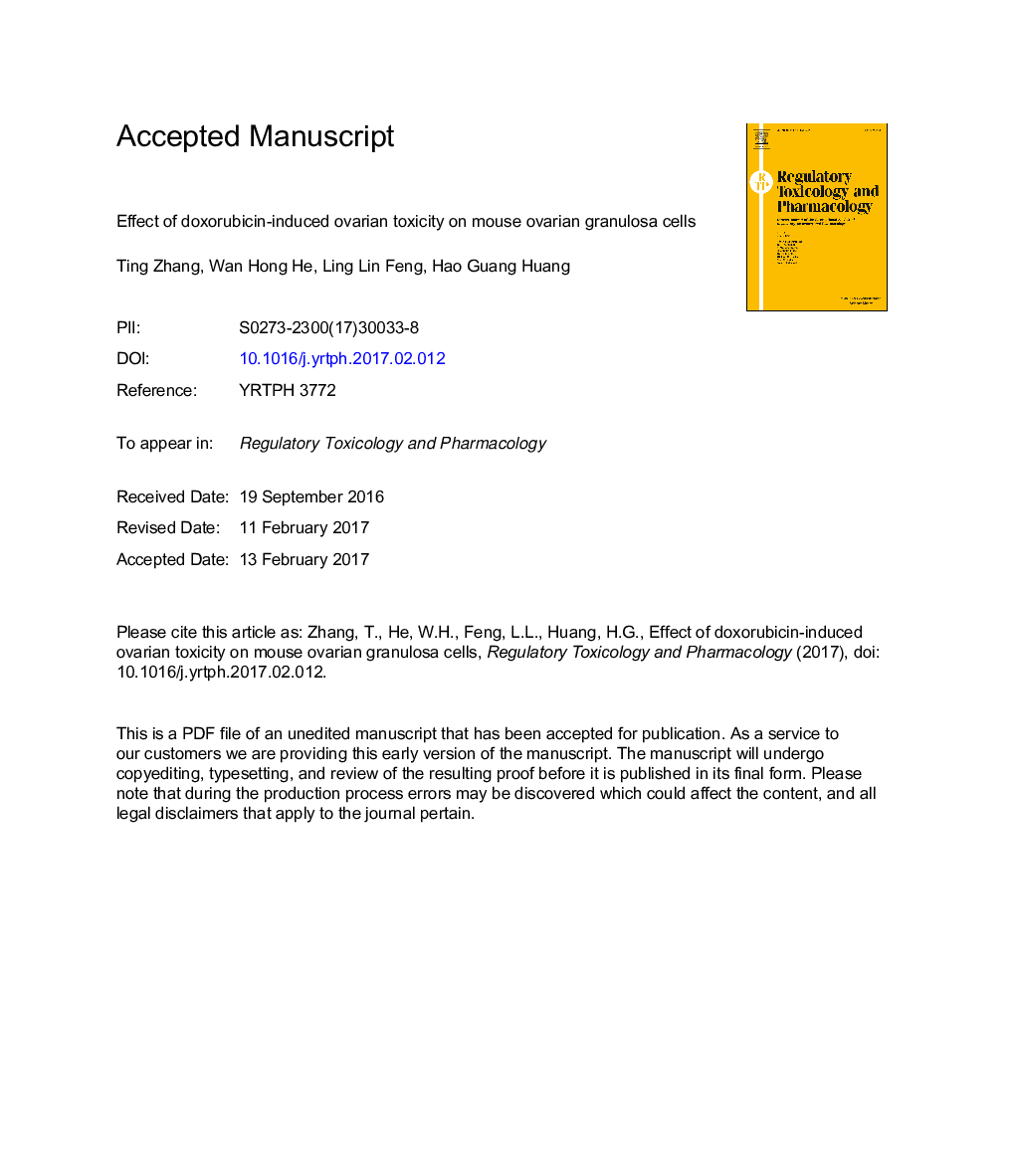| Article ID | Journal | Published Year | Pages | File Type |
|---|---|---|---|---|
| 5561245 | Regulatory Toxicology and Pharmacology | 2017 | 38 Pages |
Abstract
The objective of this study was to identify the effect of doxorubicin-induced ovarian toxicity on mouse ovarian granulosa cells. After granulosa cells were treated with doxorubicin at the final concentrations of 0, 0.4, 0.8, and 1.6 μg/ml for 24 h, cell apoptosis was detected by DAPI staining or caspase-3/7 fluorescence probe; ROS was determined by 2â², 7â²-dichlorodihydrofluorescin diacetate fluorescence probe; mitochondrial membrane potential was detected by rhodamine-123 fluorescence probe; and mRNA expression levels of Bax, Bcl-2, p53, FSHR, StAR, P450scc and P450arom were analyzed by RT-PCR. Results indicated that doxorubicin could induce apoptosis of granulosa cells (p < 0.01); increase ROS generation (p < 0.05 or p < 0.01); decrease mitochondrial membrane potential (p < 0.05); increase mRNA expression levels of Bax, Bcl-2, and p53 (p < 0.001); enhance mRNA expression level of StAR (p < 0.01 or p < 0.001); and inhibit mRNA expression level of P450scc in granulosa cells (p < 0.05 or p < 0.001). The mRNA expression levels of FSHR and P450arom were not influenced by doxorubicin. We suggest that the ovarian toxicity of doxorubicin was associated with apoptosis of granulosa cells, ROS accumulation, and decline of mitochondrial membrane potential in granulosa cells. In addition, cell apoptosis was regulated by Bax, Bcl-2, and p53, and hormone generation could be influenced by StAR and P450scc.
Keywords
Related Topics
Life Sciences
Environmental Science
Health, Toxicology and Mutagenesis
Authors
Ting Zhang, Wan Hong He, Ling Lin Feng, Hao Guang Huang,
